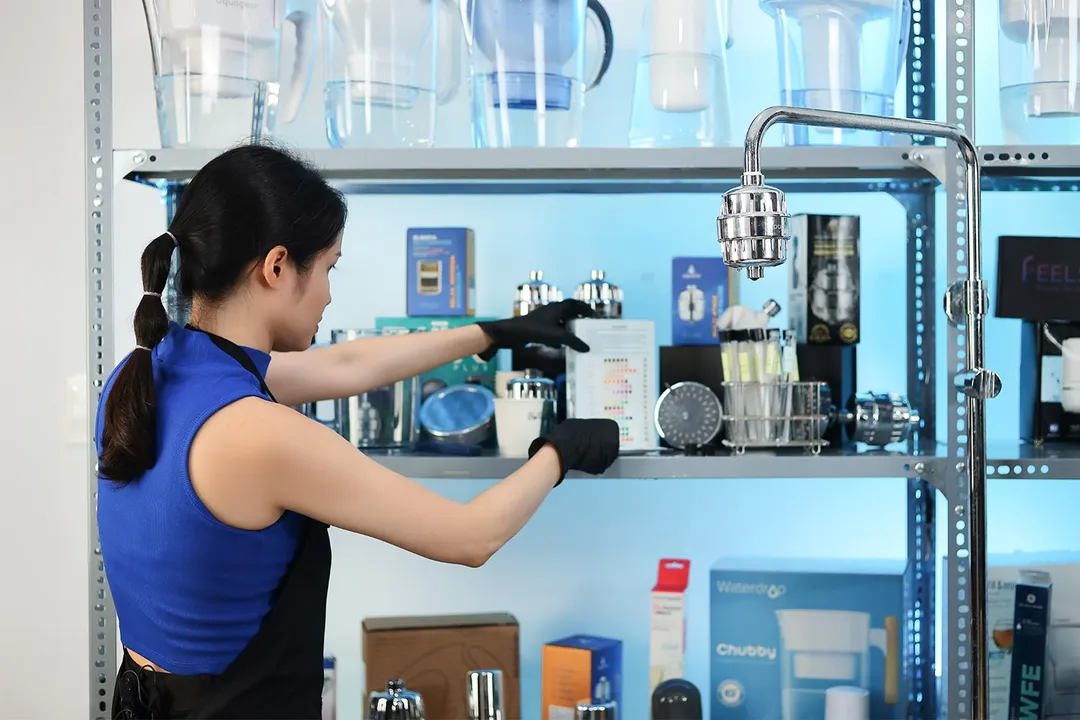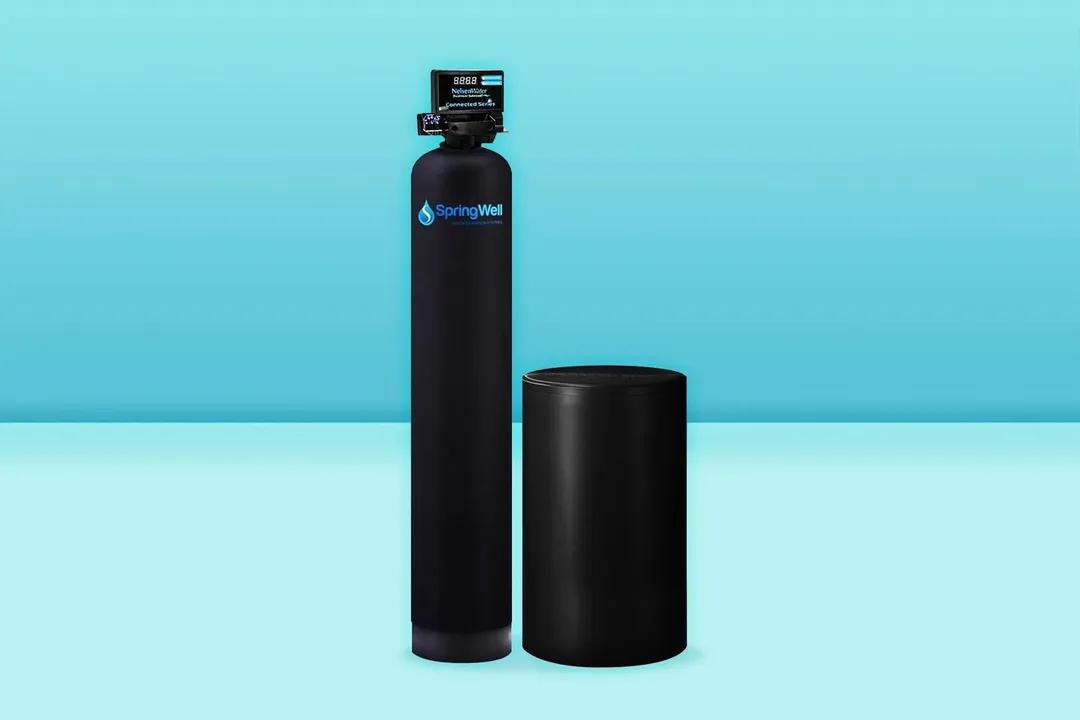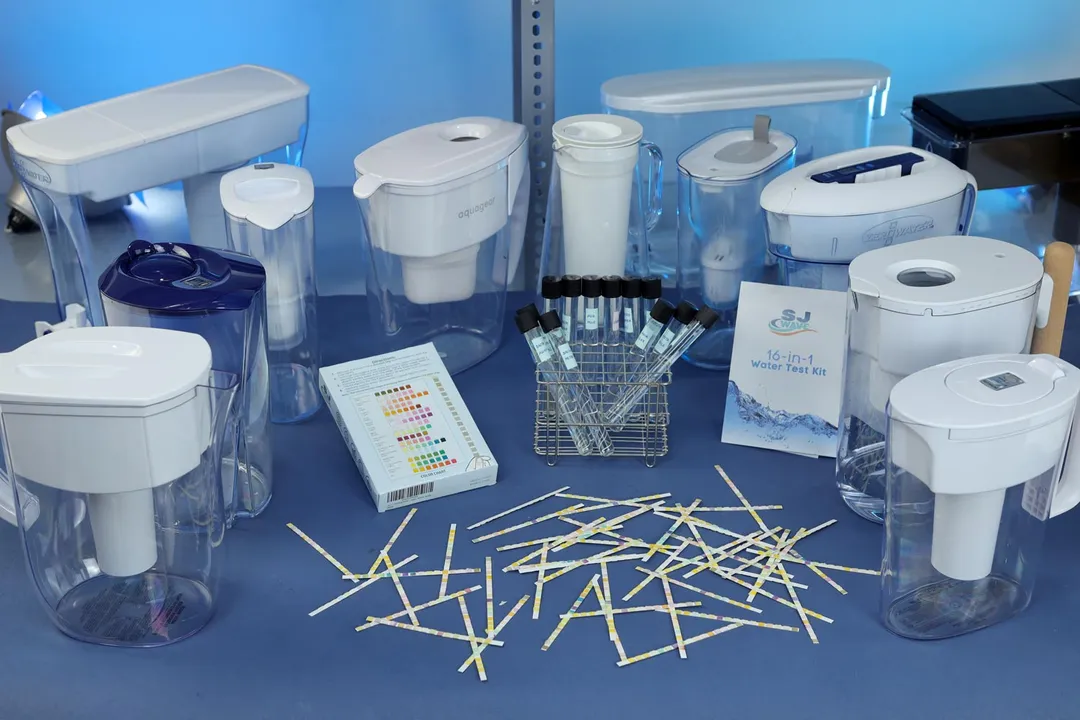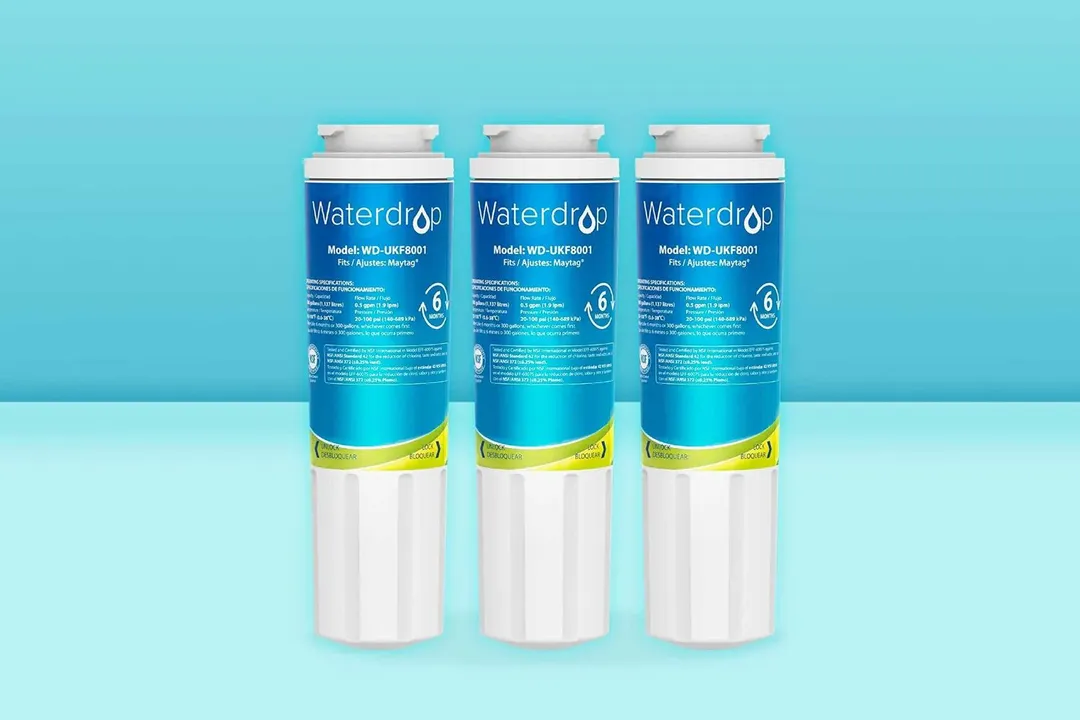Zero Water vs Brita: Which Is the Better Water Filtering Pitcher Brand?
If you have been searching for a new water filtering pitcher to buy, then you must have stumbled upon the two names Zero Water and Brita before.
As two of the top brands in this small market segment, both companies have many compelling filter pitcher models to choose from . But since their products are so similar to one another, it can be pretty tough to make a judgment call on which one to buy.
This article aims to settle the Zero Water vs Brita debate by comparing the differences in design, performance, features, and cost between their products. By the end, you should find it easier to pick the perfect pitcher to call your own.
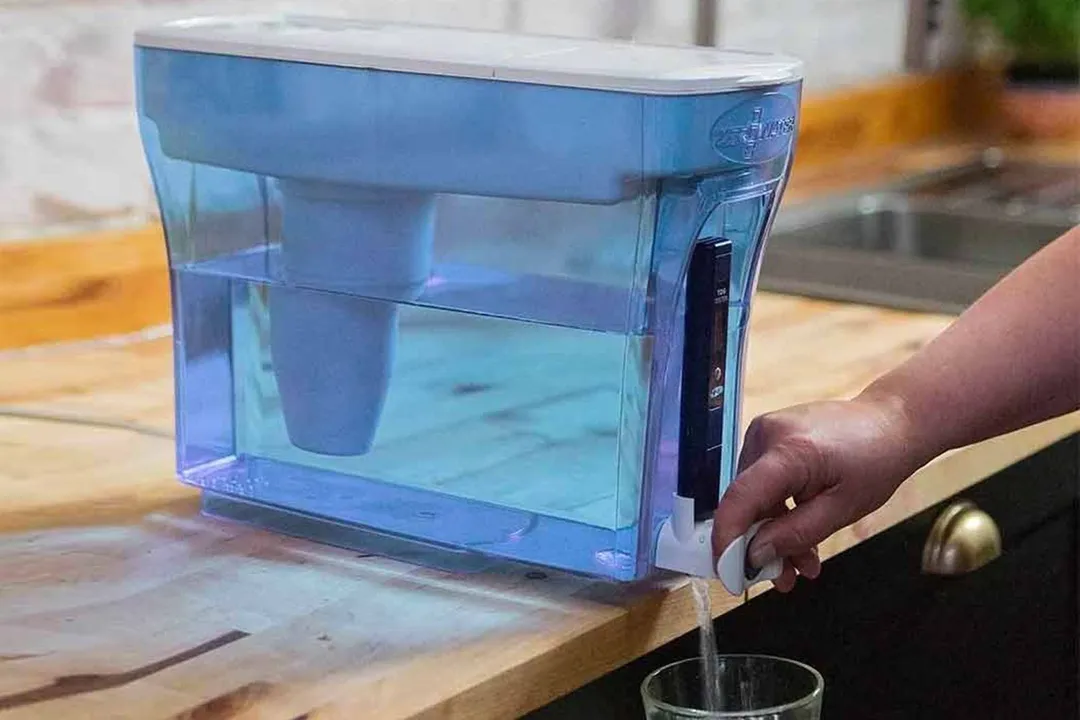
Basics About Water Filtering Pitchers
A water filtering pitcher (or “gravity pitcher”) is an inexpensive and easy-to-use device that can give you potable water in only a couple of minutes.
The way it works is fairly simple. When tap water is poured into a receptacle at the top, it flows through a filter cartridge that takes out all of the contaminants and impurities in the water. Most water filter cartridges nowadays can also freshen up the taste and neutralize bad odors in the water, too.
Once the filtering is completed (which should take about a minute or two,) clean water will emerge from the other side of the cartridge and flow into the pitcher’s reservoir. When you need a drink, just pour the water in the reservoir out into a cup and enjoy.
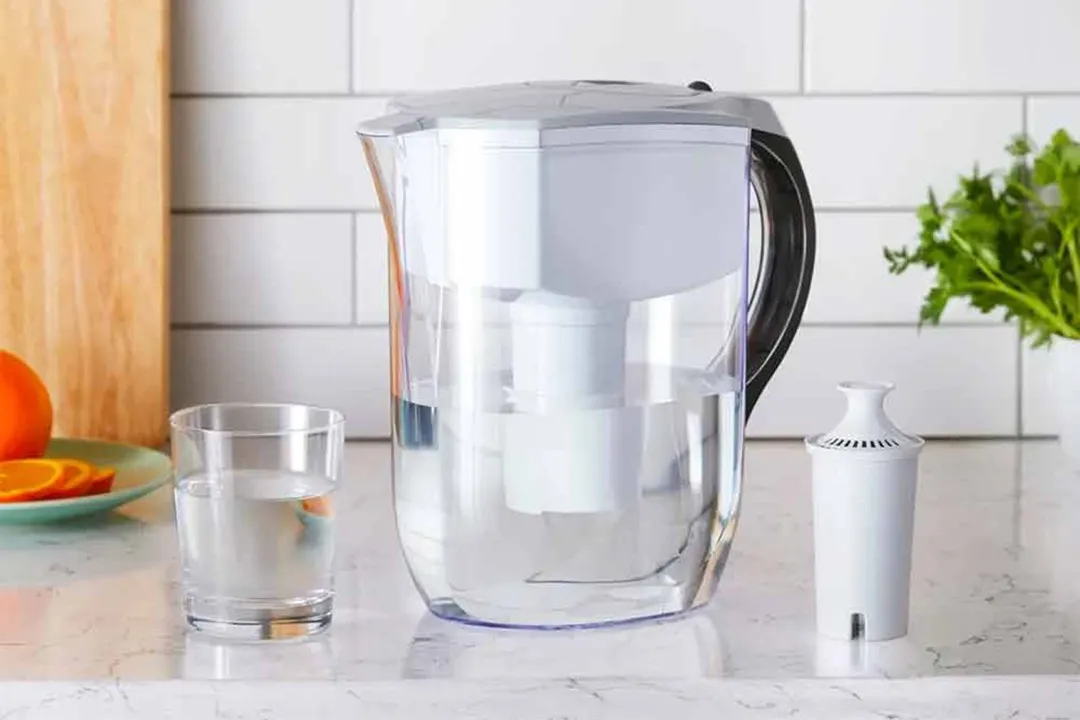
The reason why these pitchers are also occasionally called gravity pitchers is that, unlike other filtering systems, they use only the force of gravity to pull water through the filter. In other systems, water must be pumped under pressure through the filter. As a result, you don’t need to plug a pitcher into an outlet and can just use it as it is.
Why You Should Use a Water Filtering Pitcher
There are many benefits to using a water filtering pitcher. One of the most common reasons that people filter their water is because they cannot stomach the taste or smell of straight tap water.
According to a geological survey, more than half of the wells sampled in the U.S contain certain “nuisance” chemicals that make the water difficult to drink. If having bad odors and tastes are apt descriptions for the quality of your tap water, you should definitely consider having a filter pitcher around.
But these pitchers aren’t only popular among those who use private wells. People who use public water and cannot stand the faint tang of chlorine also use these pitchers to get better-tasting water.
Taste and odor aside, the pitcher’s filter cartridge will also be able to remove certain harmful chemicals and compounds from the water. The list of potential chemicals and compounds that a pitcher filter can take care of is quite long (arsenic, cadmium, asbestos, mercury, etc.)
Nonetheless, keep in mind that the efficacy and list of removable chemicals may vary depending on the filter model and brand. Certain models will not be able to filter out everything and only offer protection against a small group of substances. This is why it’s important to read the manuals and descriptions when you purchase a new pitcher.
One of the most common health hazards that occur in domestic drinking water pipelines is lead contamination. It can be caused by old lead water pipes and faucets leaking the chemical into the water.
Exposure to lead over a long period of time can cause learning disabilities, and impairment of the nervous system, among other critical health issues in children. For adults, an accumulation of lead in the body can aggravate cardiovascular diseases and cause fertility issues.
The dangerous thing about lead-contaminated water is that you cannot see, smell, or taste the dissolved lead in the water. To know for sure whether you have a lead problem in the pipes or not, professional measurements must be taken. Just to be safe, filter your water anyway.
All You Need to Know
Zero Water Filters
Pitchers that carry the Zero Water brand name are known first and foremost for their potent filtering power.

To be more specific, the company’s filter cartridge is made up of up to five different filtration stages. By contrast, cartridges from other companies like Brita or Pur only have two stages at best.
Thanks to the more elaborate filter cartridge design, Zero Water’s pitchers can eliminate a broader range of contaminants. And according to the company’s marketing materials, their pitcher systems have a better filtering performance than any other product on the market.
Though it may have sounded as if it’s just marketing hyperbole, there has actually been independent research done on this. Zero Water’s filter, out of five different types of pitcher filters sampled in this study, was able to reduce arsenic concentration in the water best. So the company’s claim of being the “best-performing filter on the market” is actually quite valid.
As for the pitchers themselves, Zero Water offers them in many styles, colors, and sizes. You can find small pitchers that can hold six cups of clean water at a time, to larger ones with reservoirs large enough to comfortably store 30 cups.
The way their pitchers are designed is generally considered to be user-friendly. You only need to insert the filter cartridge into the center compartment, pour tap water in, and clean water will be ready for you in a couple of minutes.
Brita Water Filters
Brita’s name is commonly associated with affordability. The company fields many popular low-cost pitchers and filter designs, making Brita’s quite popular among the cost-conscious consumer. In addition, Brita’s products are also quite easy and convenient to use, boosting their appeal even further.
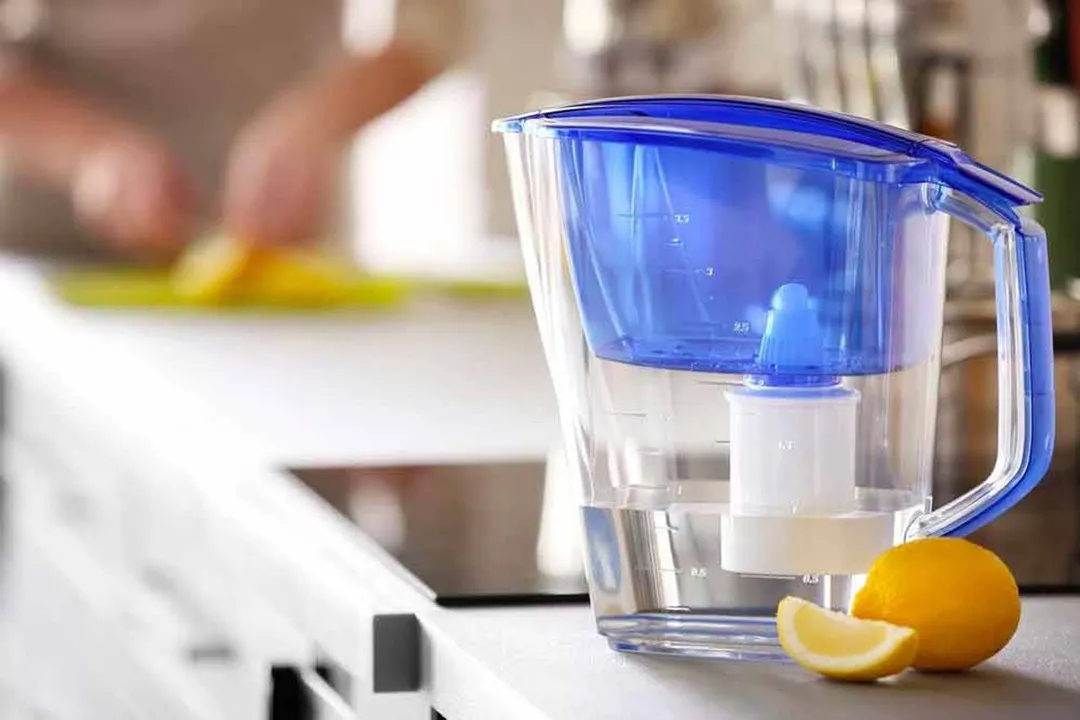
Brita’s filters are typically constructed from fine-grained activated carbon, which is the primary ingredient that absorbs contaminants in the water flow passing through the filter.
The interesting part is that the activated carbon grains used by Brita in their products are actually derived from natural coconut shells. Coconut shells have a porous structure that gives them excellent water filtering properties. And sure enough, this ability shows up on filtration tests particularly well.
It may not be as good as Zero Water’s robust five-stage filter, but Brita filters are still good enough to protect you against most water-borne health hazards. Plus, with the price that their filters are sold for, it’s a nice bargain.
Brita has many types of pitchers on offer. Available in many kinds of designs and sizes, you can find pitchers capable of holding as few as five cups to as much as 25 cups.
The way you use them is also pretty simple and to-the-point: insert the filter cartridge into the slot on the pitcher, pour in water, wait, and serve.
Related post: Brita vs. PUR: Which Is The Better Water Filter?
How Do They Perform Against One Another?
Brita Filters’ Performance
You have two types of Brita pitcher filters to choose from: the Brita Standard and Brita LongLast.
Both Brita filters meet the National Sanitation Foundation (NSF) Standard 42 and Standard 53.
What this means is that the company’s filters can take out “aesthetic impurities” like chlorine and other chemicals that make your water taste, smell, or look bad (NSF/ANSI 42). To be certified for NSF/ANSI 53, these filters must be able: “to reduce a contaminant with a health effect”. This one contaminant can be anything ranging from lead to mercury. As long as the filter is able to handle one, then it’s considered certified.
This is a very important point to keep in mind because the Brita Standard is not capable of handling lead. However, because it’s able to filter out other contaminants like mercury, zinc, and copper, it’s certified for NSF/ANSI 53 anyway.
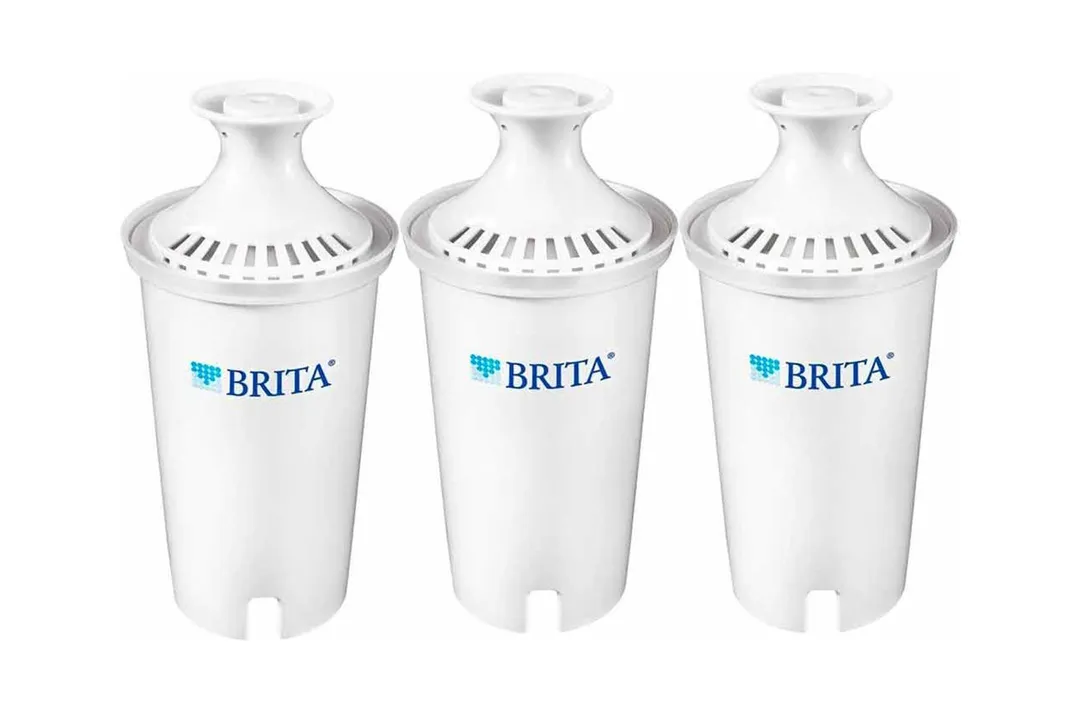
Brita’s filters are quite simplistic in design, consisting of layers of coconut-derived activated carbon and ion exchange resin beads. The ion exchange beads can help the filter take out more dissolved minerals from the water as well as certain types of organic compounds.
In terms of flow rate, both the Brita Standard and LongLast have been measured to take about 40 seconds to filter enough water for a full glass. This is very impressive. In fact, Brita’s filters have one of the best flow rates on the market.
Brita filters also have pretty good longevity and this is the primary difference between the two models (Standard and LongLast). The Standard filter lasts about two months, but the LongLast is built tougher and can serve for as long as six months before having to be replaced.

Zero Water Filters’ Performance
Just like Brita’s filters, Zero Water’s filters are also certified with the NSF under NSF/ANSI 42 and 53. It can deal with chlorine, taste-changing and odorous chemicals, as well as harmful contaminants like lead and arsenic.
Such is the company’s confidence in their filter that when you buy a Zero Water filter, you will also find a Total Dissolved Solid (TDS) meter in the box. You can use it to measure the water quality before and after filtration, if you have your doubts about the filter pitcher’s realistic performance.
The company’s reassurances aside , most customers have reported notable improvements after being treated by Zero Water’s filters. As such, the company has an excellent track record as far as performance goes.
As previously mentioned, Zero Water is able to attain such great filtering performance due to the special five-stage design they built into each filter. Each stage is as follows :
- Filter screen: The outer filter screen removes all of the straggling debris, dust, sediment, and other particles.
- Foam distributor: Capable of eliminating suspended solids in the water.
- Carbon oxidation reduction alloy: This layer is designed specifically to deal with organic compounds in the water. These compounds can be Bisphenol A (BPA), Benzene, and certain classes of pharmaceuticals that could’ve made their way into the water pipe.
- Ion exchange resin: The resin helps reduce the number of organic compounds in the water even further.
- Non-woven membrane & Ultra-fine screen: The job of the last stage is to remove any kind of debris, sediment, or suspended solids that remain in the water.
Because there are so many stages for the water to go through, Zero Water’s filtration speed is very slow. From the moment you pour in the raw tap water, it can take as long as two minutes for the filter to produce enough clean water to fill a glass.
Zero Water isn’t as long-lasting as Brita. The company’s filters can only last approximately three months of regular use.
What Do They Remove?
Brita Filters
Here is a short excerpt from the list of contaminants that the two Brita filters can effectively remove. You can use this list to choose which of the two to go with if you want to get a Brita filter.
Contaminants | Brita Standard | Brita Longlast |
|---|---|---|
Chlorine | X | X |
Lead | X | |
Mercury | X | X |
Cadmium | X | X |
Benzene | X | |
Asbestos | X | |
Class I Particulates | X | |
Class IV Particulates | ||
Copper | X | |
Zinc | X | |
1, 2, 4 - Trichlorobenzene | ||
Trichloroethylene (TCE) | ||
Bisphenol A (BPA) | X | X |
Atrazine |
As can be seen, although the Brita LongLast has better longevity, it doesn’t mean that it also has better performance. As can be seen, the LongLast is incapable of eliminating certain kinds of contaminants (copper and zinc, for example) that the Standard is able to.
Nonetheless, the LongLast’s ability to reduce lead concentration is the primary reason why most people just buy it anyway over the Standard.
Zero Water Filters
Contrary to Brita’s multiple offerings, Zero Water only sells a single filter model. This can make choosing the proper filter to use less challenging.
The Zero Water filter is capable of taking out the following contaminants, according to this test.
- Chlorine
- Lead
- Arsenic
- Mercury
- Cadmium
- Thallium
- Copper
- Iron
- Zinc
- Asbestos
- Cyanide
- Fluoride
- Nitrate
- Nitrite
The data set is not complete, unfortunately, because Zero Water doesn’t disclose a lot of data about their filter’s performance like Brita does . It also lacks many of the contaminant classes found in Brita’s performance data, too, notably , the many kinds of organic compounds like TCE and BPA.
As a result, saying which out of the two can filter out more contaminants is not a question that we can answer since we don’t have the data on hand to say for sure. But rest assured, all of the most harmful contaminants (lead, for example) can be handled with ease by Zero Water.
Pitcher Models
Brita Pitchers
Brita has many different kinds of pitcher designs on offer. As of the moment of writing, you can choose between 15 options . Each differs from the other in terms of design, color, size, and cost.
The costliest model currently available from Brita is the Brita Ultramax Dispenser. UltraMax has a large enough reservoir to hold eighteen cups of water or six 24-ounce water bottles, great if you have large demand. Each UltraMax comes with a complimentary LongLast filter.

The most affordable model in Brita’s portfolio is the Brita Metro. This small pitcher can hold five cups or two 24-ounce water bottles.
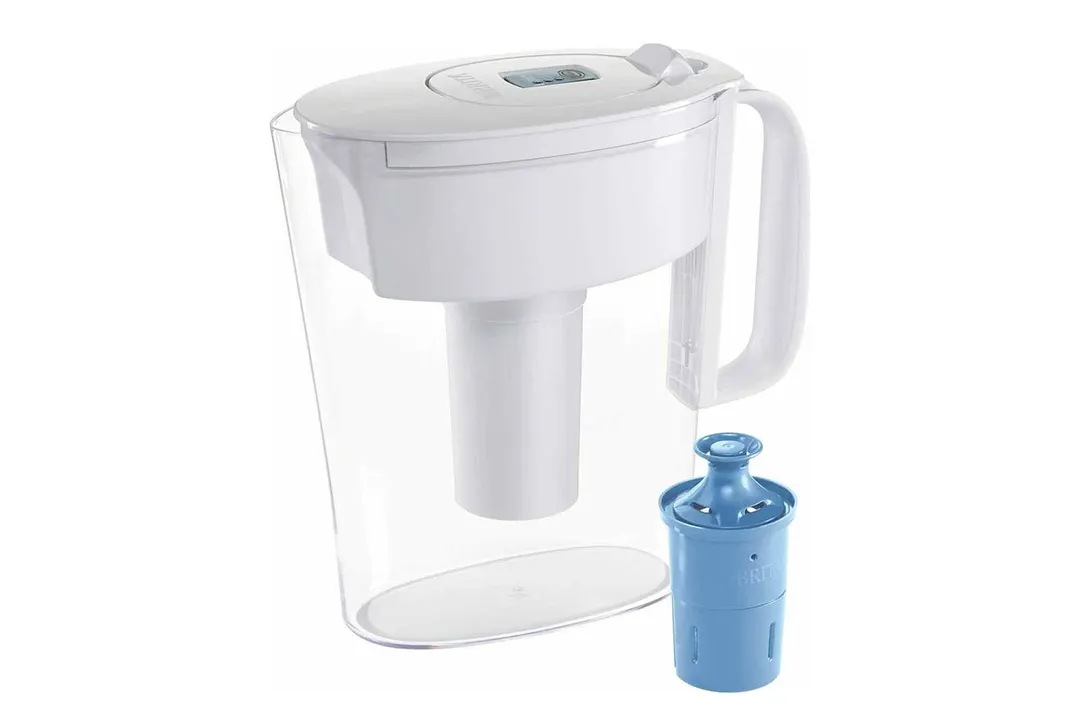
All of the pitchers are compatible with both the Standard and the LongLast filter. Use whichever suits your preferences.
Zero Water Pitchers
Zero Water pitchers are similarly diverse in design, size, and cost. And because the company only offers one type of filter, you don’t have to worry about compatibility for this one.
The pitchers don’t have special names like Brita’s (such as “Metro” or “UltraMax”), instead, they’re designated by their size. It’s easier to know how much they cost this way, too, since the larger it is, the costlier it’s going to be.
The most premium model on offer from Zero Water as of now is the ZeroWater 40 Cup Ready-Pour Glass Dispenser (ZBD-040-1) with a capacity of 40 cups.
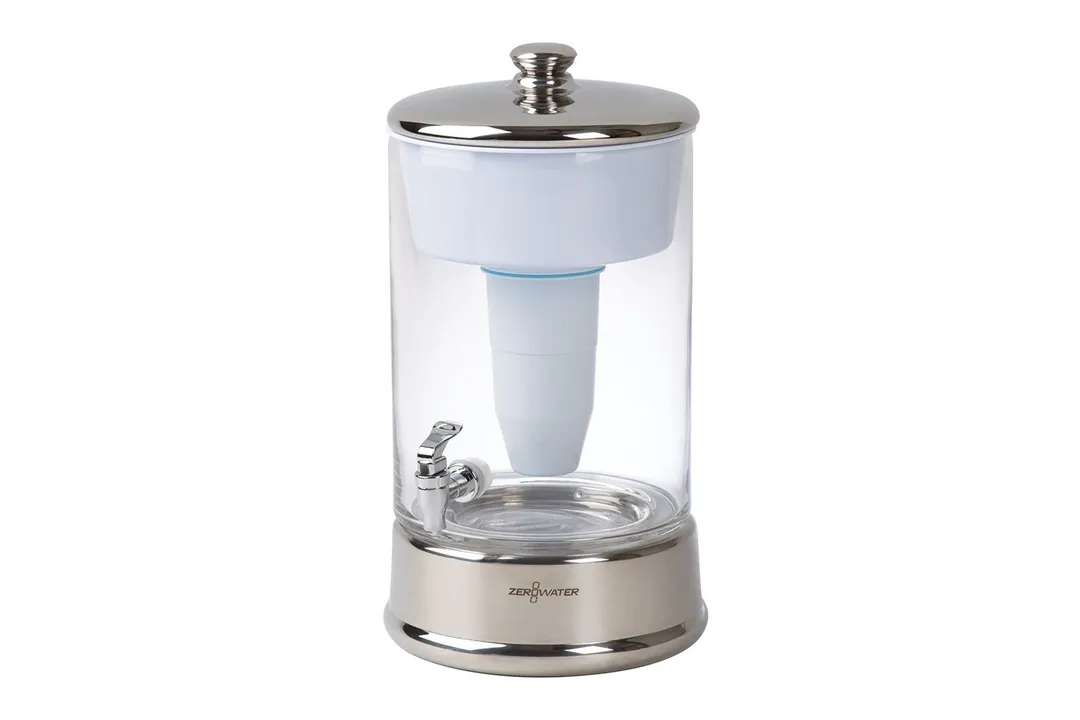
On the opposite end of the price spectrum is the ZeroWater 6 Cup Filter Pitcher (ZP-006-4).
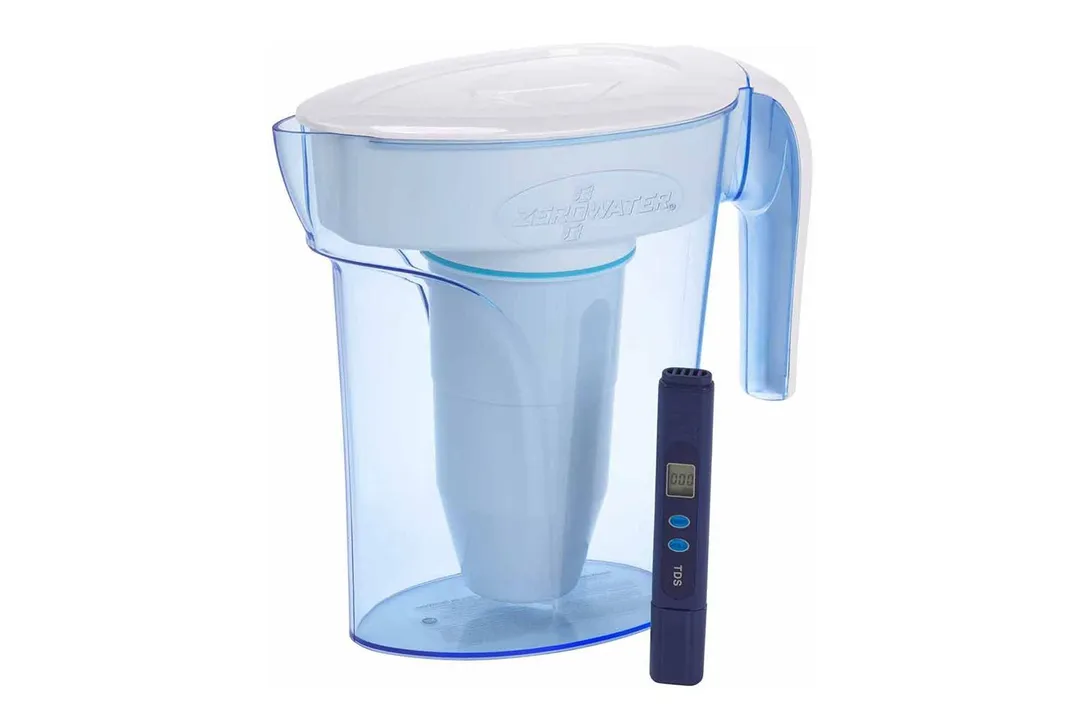
One thing that could be considered a downside is that there aren’t many color options available. Most of the pitchers are only available in a bland plastic white paint. Thus, if you prefer to have a bit more style in your kitchen, Zero Water might not be the brand to do it for you. If you don’t have special needs in filtering performance, you might want to go for Brita instead..
Maintenance Costs
Maintenance Costs of Brita Pitchers
As said before, Brita filters can last between two months (Standard) to six months (LongLast). This equates to a lifespan of 40 gallons for the Standard or 120 gallons for the LongLast.
Of course, how long you can use your filter varies depending on the quality of your water and how often you use the system. If your water is heavily contaminated, the filter can wear out far quicker than if your house’s water is decently clean. And if you regularly use your pitcher (three, four times a day, for example,) your filter can burn out more quickly, too.
A 3-pack of Brita Standard filters will set you back about $15. As is to be expected, LongLast filters cost more and a 2-pack of LongLast filters can cost as much as $28. However, considering how much more life and performance you can get out of a LongLast, it’s actually a better value buy than the Standard.
Maintenance Costs of Zero Water Pitchers
Each filter from Zero Water is good for about 20 to 25 gallons of water (or about three months.) There’s a pretty decent explanation as to why Zero Water’s filters are so fickle. Because there are up to five different stages of filtration, these filters can accumulate contaminants and particles more quickly.
Despite their more sophisticated design, Zero Water’s filter costs about the same as a Brita LongLast filter at $15 for a single unit. But taking into account the fact that the LongLast can last up to six months over the Zero Water’s three, it can be said that the Brita LongLast is a better buy overall. However, if you want better filtering performance, the extra cost may be well worth it.
Conclusion
So, which comes out best in this Zero Water vs Brita squabble, in the end ?
It depends on you. If you want a filtering pitcher that’s affordable, stylish, and can do the job sufficiently well, choose Brita. It may not have the best filtering performance on the market, but it can do a commendable job.
On the other hand, if you want a pitcher that can thoroughly cleanse your water and don’t mind the extra expenses, the Zero Water ought to be the better choice out of the two.
About your guide
Luna Regina is an accomplished writer and author who dedicates her career to empowering home cooks and making cooking effortless for everyone. She is the founder of HealthyKitchen101.com and HealthyRecipes101.com, where she works with her team to develop easy, nutritious recipes and help aspiring cooks choose the right kitchen appliances.


